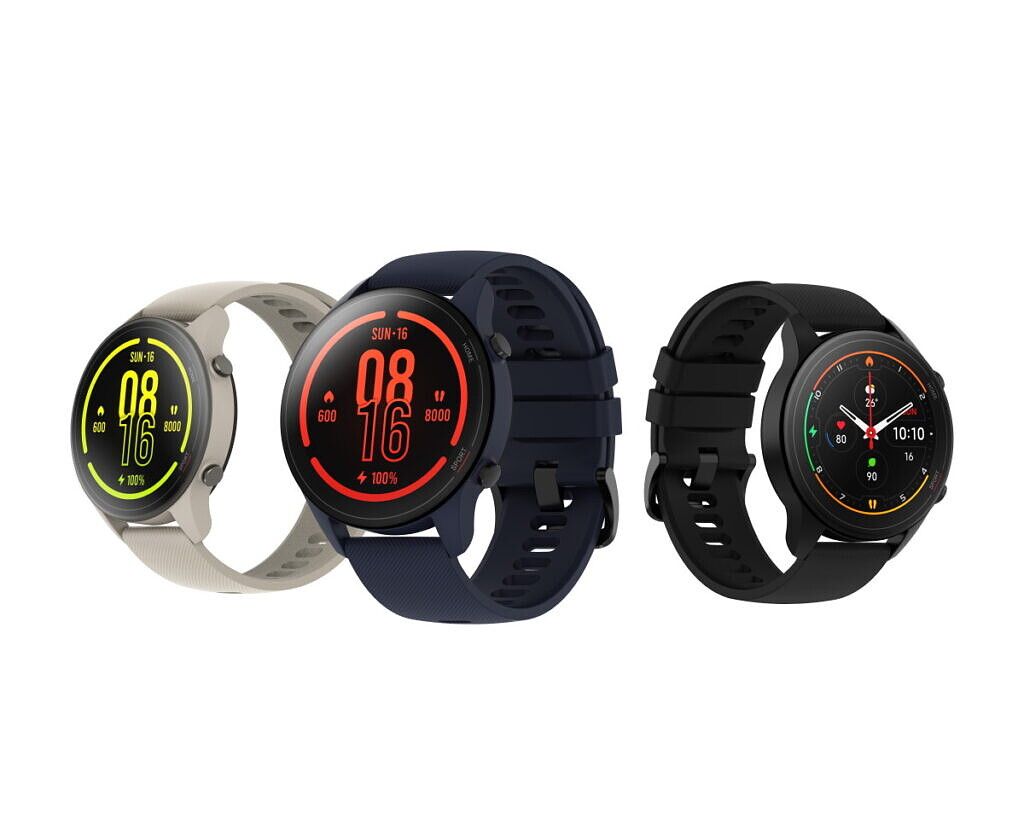I have always been a fan of Xiaomi phones. In the past, the adoration was mostly value-driven: the company’s hardware wasn’t quite at the level of big dogs like Samsung and Huawei, but the devices were significantly cheaper than the competition that I had no choice but to admire them for their value. My logic for recommending Xiaomi phones circa 2018 was this: they are like 85-90% as good as the best Samsung or Huawei counterpart, but Xiaomi is like half the price! The math works out in your favor if you don’t need the absolute best in everything.
With this spring’s Mi 10 series, Xiaomi stopped this “90% as good” approach and is instead going for the full kill. We previously noticed it in our Mi 10 review, proclaiming the Mi 10 Pro as Xiaomi’s best phone ever. I wrote the same thing in my review for another publication. Because Chinese brands work crazy fast, Xiaomi has already released two more updates to the Mi 10 series before it’s even half a year old. There was the China-only Mi 10 Ultra a couple of months back, and now, the Mi 10T series, which consists of the usual “Pro,” “standard,” and “Lite” variants that every phone brand has seemingly adopted.
I only have the Mi 10T Pro variant for testing, but a lot of the things said for the Pro apply to the standard Mi 10T too, as they are practically the same other than the primary camera. Here’s our hands-on and first impressions with the new Xiaomi Mi 10T Pro.
Xiaomi Mi 10T Pro: Specifications
| Specification |
Xiaomi Mi 10T Pro |
| Dimensions & Weight |
- 165.1 x 76.4 x 9.33 mm
- 218g
|
| Display |
- Display:
- 6.67″ FHD+ 144Hz LCD display
- 20:9 aspect ratio
|
| SoC |
- Qualcomm Snapdragon 865:
- 1x Kryo 585 (ARM Cortex-A76-based) Prime core @ 2.4GHz
- 6x (ARM Cortex-A55-based) Efficiency cores @ 1.8GHz
- 7nm EUV process
- Adreno 650
|
| RAM & Storage |
- 8GB + 128GB; 8 + 256GB
- Expandable via microSD card slot
|
| Battery & Charging |
- 5,000 mAh
- 33W fast charging
|
| Fingerprint sensor |
Side-mounted capacitive fingerprint sensor |
| Rear Camera |
- Primary: 108MP, 1/1.33″, f/1.7
- Secondary: 13MP, ultra-wide-angle, f/2.4, 123° FoV, 1.12µm pixels
- Tertiary: 5MP, macro sensor, f/2.4
|
| Front Camera |
|
| Other Features |
- Wi-Fi 802.11 a,b,g,n,ac
- Bluetooth 5.1
- NFC
- USB 3.1 Type-C
|
| Android Version |
MIUI 12 based on Android 10 |
Note: I received the Xiaomi Mi 10T Pro from Xiaomi on September 24. I haven’t spent enough time with it for a definitive review, which we will publish in the coming weeks. Xiaomi did not have any inputs in this article.
Design and hardware
The Xiaomi Mi 10T Pro has two headline-grabbing features: it features a 144Hz display and a large 5,000 mAh battery. Both of these are also available on the standard Mi 10T (not the Mi 10T Lite, however). There’s also a 108MP primary camera with a large-ish image sensor size of 1/1.33″, but this is the same hardware seen in the Mi 10 Pro, so it’s not “new” per se.

The construction on the Mi 10T Pro is premium: you have Gorilla Glass 5 on front and back, sandwiching an aluminum chassis. My unit comes in this glossy, metallic finish (it reminds me of the T-1000 from Terminator 2 when its shape-shifting). It looks great when it’s clean, but attracts fingerprints easily. There’s a side-mounted fingerprint scanner along with a volume rocker on the right side.
The primary camera features a 108MP ISOCELL Bright HMX sensor built by Samsung. This is the same sensor Xiaomi used in the Mi 10 Pro, but the company’s top device, the Mi 10 Ultra, had moved to a newer custom-built OmniVision 48MP sensor. So a return to this 108MP indicates that this phone sits below the Mi 10 Ultra in the pecking order.

Despite the 2X2 grid of what appears to be lenses below the main large camera, only two are sensors: a 13MP ultra-wide angle and a 5MP macro lens. The other two are an LED flash and what appears to be decoration.
Around the front is that 144Hz, a 6.67-inch LCD panel. It uses what Xiaomi calls “AdaptiveSync” technology, meaning it automatically switches between seven different refresh rates: 30/48/50/60/90/120/144Hz, depending on what the app needs.

I can say right now: animations within the phone’s UI feel buttery smooth and makes the LG Wing’s 60Hz panel look slow by comparison. The LG Wing isn’t a slow device in a vacuum, but it feels slow when used side-by-side with the Mi 10T Pro.



Under the hood is a Snapdragon 865, with 8GB RAM and a 5,000 mAh battery. One of the reasons I say Xiaomi has made a jump up in hardware this year is mostly due to the little things like haptic engine and speakers, which have been excellent in almost all Xiaomi releases this year. The same story is repeated here: the Mi 10T Pro has glorious haptics that makes typing a joy, and stereo speakers that pump out full sound.
Software
The Mi 10T Pro runs on Xiaomi’s MIUI 12 on top of Android 10 with Android 11 in the works (presumably, the Mi 10T Pro will also get Xiaomi’s Android 11 update). MIUI is a heavier UX skin than, say, OnePlus’ OxygenOS or Samsung’s One UI, and it’s not going to be everyone’s cup of tea. I enjoy its whimsical animations and aesthetics — for example, when you delete an app, the app blows up, sending a mini shockwave to surrounding apps. However, the settings page is overly complicated and a pain to navigate.





For instance, if you want to change the navigation style from gestures to button or vice versa, you have to go to “additional settings,” then “full-screen display” before you can make this change. If you search “navigation” in settings, nothing shows up. Likewise, with changing how long the screen stays awake — on any Android phone, this would be under the “display” part of settings. Not in MIUI, as that’s under “lock screen” here.
Cameras
I haven’t had time to thoroughly test out the cameras yet as of the time of writing, but from my early testing, the Mi 10T Pro’s main camera is a flagship-level sensor. By default, it shoots excellent 27MP photos with a natural depth-of-field thanks to that large 1/1.33″ sensor.








There is an option to shoot in 108MP mode, which is excellent in good lighting conditions, as it allows for more detailed shots that can be cropped in. In fact, from my early testing, I think the Mi 10T Pro’s 108MP photos turned out better (less digital sharpening and artifacts). The below images are compressed due to WordPress, but if you want to pixel peep, I have uploaded the full-sized 108MP shots here.




At night, I find the Mi 10T Pro’s main camera tend to blow out Hong Kong’s city lights, but if you turn on night mode, it fixes the problems.




There’s no dedicated zoom camera, but the Mi 10T Pro’s digital zoom shots are not bad because that 108MP sensor can pull in so much information.





The 20MP selfie camera and 13MP ultra-wide-angle cameras both get the job done. I have no complaints; the latter, I’d say, works great during the day but at night suffers from the usual noise and loss of details that most ultra-wide-angle cameras, aside from the Huawei P40 Pro’s, also suffer from.




Early impressions of the Mi 10T Pro? Another super value offering by Xiaomi

There are several things I haven’t tested enough to give a final opinion. The screen looks super zippy and fluid, but I don’t know which games take advantage of that 144Hz refresh rate yet (although I played Breakneck and it did seem smoother). I haven’t tested the phone’s video recording much, nor have I pushed the battery with a heavy day out.
At a starting price of €599 ($700) for the base 128GB variant and €649 ($760) for the 256GB version, the Xiaomi Mi 10T Pro is amongst the best value smartphones out there, which is par for the course for Xiaomi.
The post Xiaomi Mi 10T Pro Hands-on Preview: 144Hz Screen is so Smooth appeared first on xda-developers.
from xda-developers https://ift.tt/3ict3MN
via
IFTTT































































